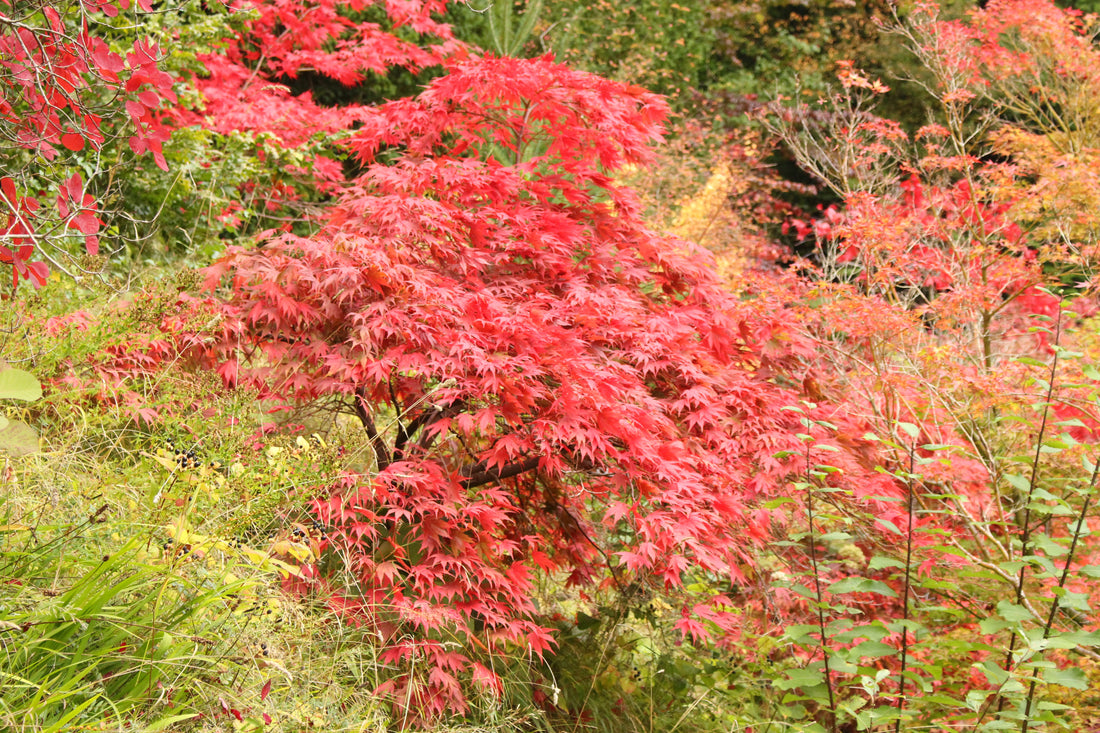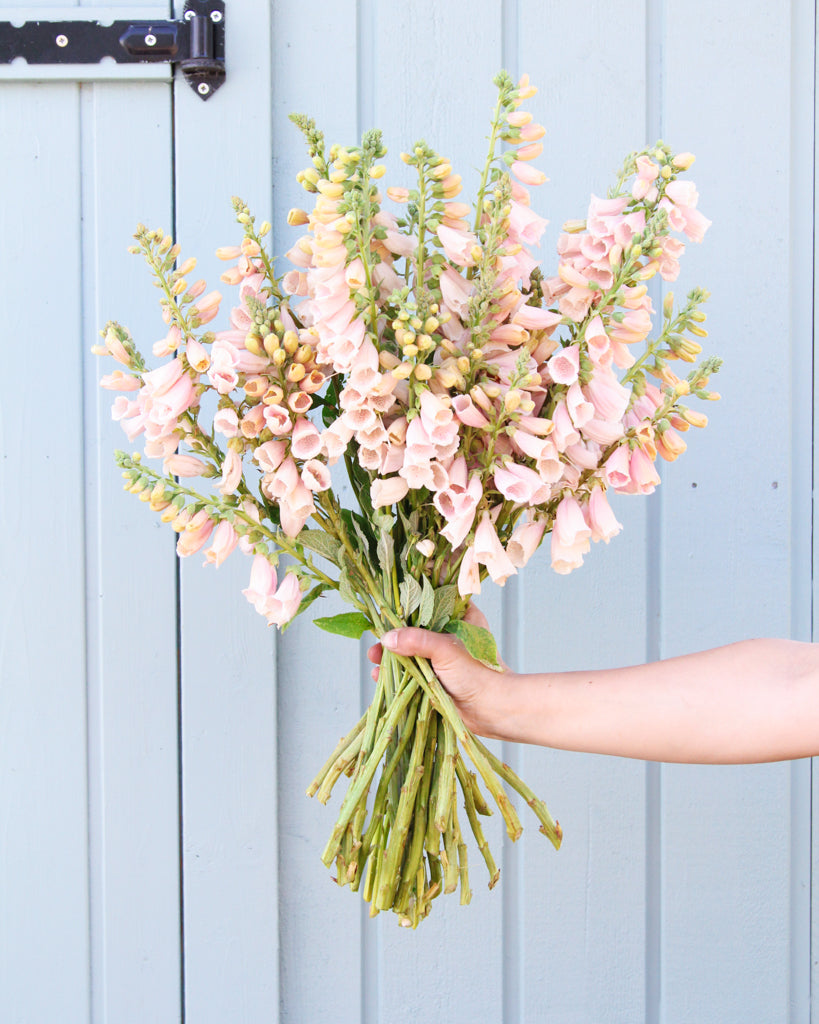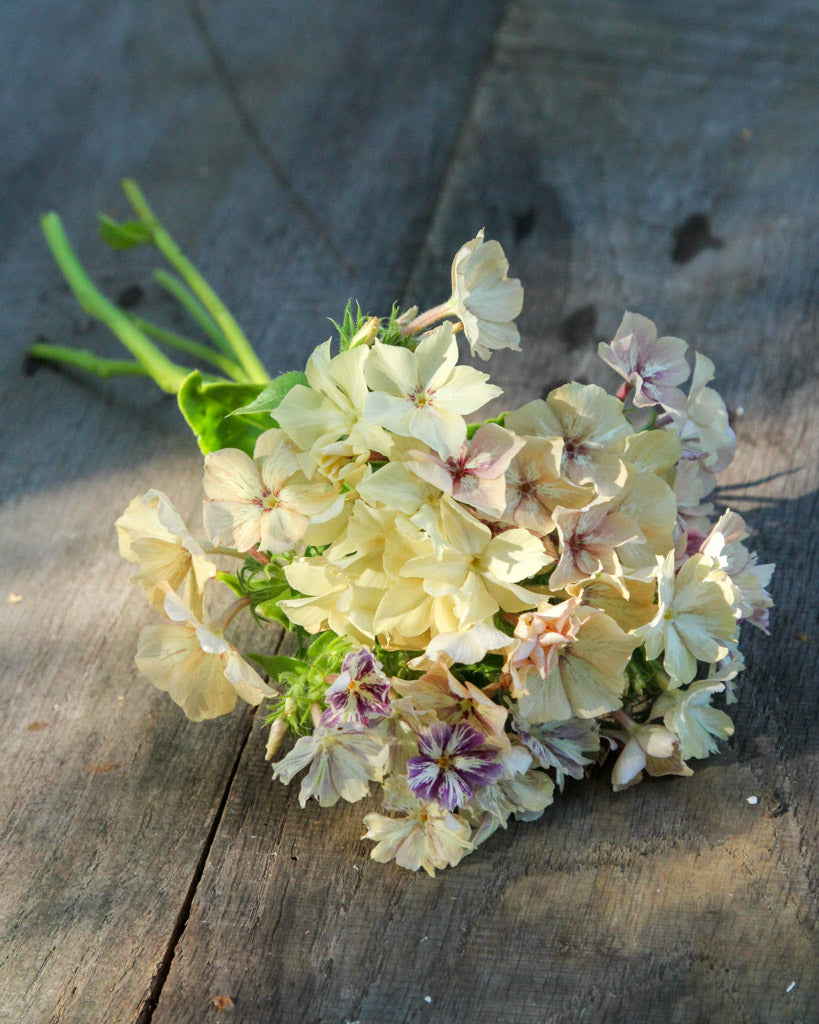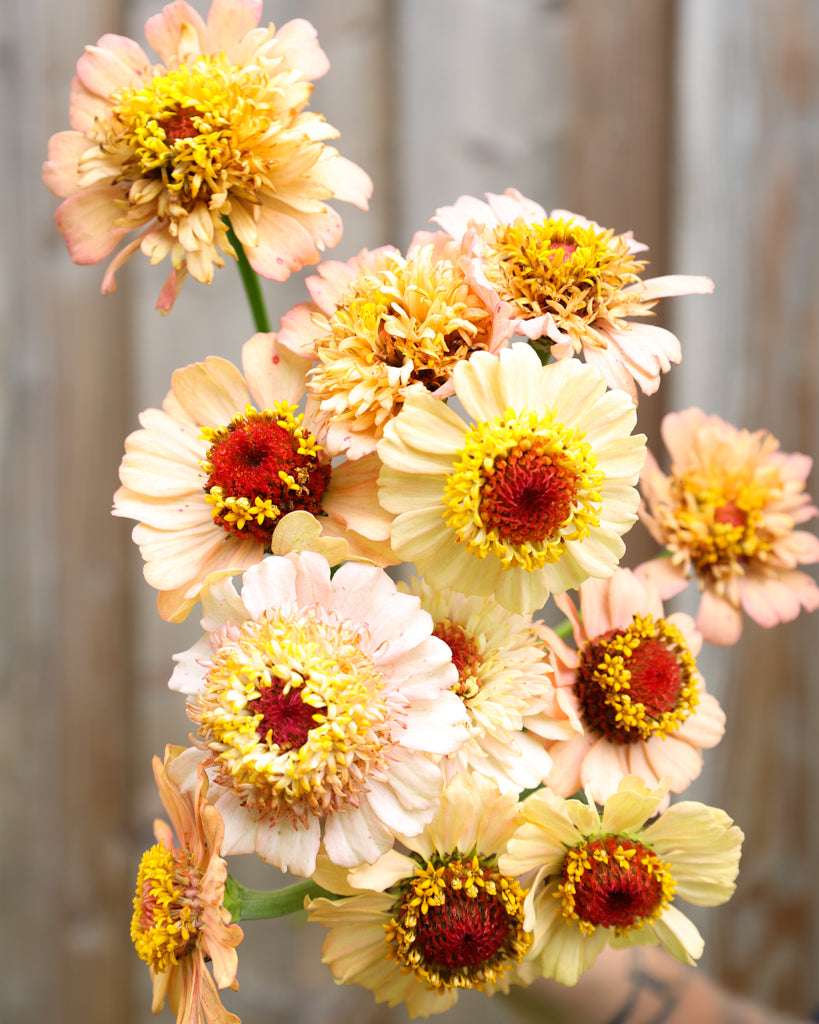Asian flair
Are you looking for an unusual ornamental tree for your individually designed garden? Then the small-crowned Japanese maples are a great choice. As a special treasure among ornamental trees, they meet this requirement and lend your garden an exotic flair.

Beauties of silence
Japanese gardens radiate a unique sense of peace and harmony; they are quiet beauties that transport one away from the hustle and bustle of everyday life and invite relaxation and inner contemplation. These gardens are often pared-down imitations of nature and reflect idealized landscapes. They are not a matter of size; even in a space as small as 5 m², such a meditative microcosm can take shape and transport the viewer to another world.
The nobility among garden plants
Some of the most beautiful garden plants come from Japan, such as the delicate and elegant Japanese maples (Acer palmatum and Acer japonicum), which are considered to be among the aristocracy of garden plants. These delicate little maples fascinate with their fan-shaped, sometimes deeply lobed leaves in a variety of green or red shades – each leaf a small masterpiece of exquisite beauty. In autumn, they impress with a firework of colors from bright golden yellow to vibrant orange to dark red. Because the range is so extensive, there is a suitable maple for every garden size. Some reach a height of 4 to 6 m, while others only grow to 1.5 to 2 m. They can even grow in very small gardens, courtyards, and in planters. More than 300 varieties, forms, and cultivars are available to the garden lover – an impressive variety.
Easier than you think
Japanese maples thrive in any normally maintained, slightly acidic to neutral garden soil. It is important that the soil is well-drained, as waterlogging can lead to frost damage and fungal diseases. Heavy soils can be loosened by adding sand before planting. It is also important to note that maples do not tolerate very calcareous soil with a high pH value, and their location should be protected from hot midday sun and drying east winds, as otherwise the delicate leaves are easily damaged. To preserve the naturally beautiful and very characteristic growth of Japanese maples, they should be pruned as little as possible. The tips of overly long shoots can be shortened in July or August, while overly thin and weak shoots are best removed shortly before the leaves emerge in spring.
Part of a total work of art
These magnificent trees are most beautifully displayed in their natural environment – Asian-style gardens. These gardens are a complete work of art in which everything is interrelated and a deliberate contrast is created between tranquility and movement. Along with the plants, stones are an important element of their design; they exude a sense of eternity and symbolize strength and endurance. The sound of water, wind effects, and the play of light and shadow also contribute to their special character.
The most important things in brief
VARIETIES:The Japanese maples generally include the very diverse and diverse species Acer palmatum, Acer japonicum, and Acer shirasawanum. They are very closely related.
Growth:These slow-growing shrubs form picturesque, spreading crowns with thin, overhanging branches. Depending on the variety, they reach heights of 1–6 m and become wider than tall with age.
Location:The shrubs prefer sunny to lightly shaded locations.
Suitable companions:Woody plants with an Asian flair include epimediums, ferns, and hostas. They all require relatively little light and have beautiful, decorative foliage.
Floor:The Japanese maple grows best in sandy loam soil with a good, stable crumb structure. If the soil isn't quite ideal, it can be amended with some sand or peat. They don't tolerate waterlogging or very calcareous soil with a high pH.
Care:During dry periods, these shallow-rooted plants must be watered regularly around the root zone. In strong sunlight, young shrubs' bark cracks quickly, so younger plants are best placed in the shade. Pruning is not required and, if necessary, should only be done in summer. Pruning in autumn or winter is not tolerated. Fertilize in April/May with a slow-release mineral fertilizer.
TEXT: Garden Magic, H. Hachmann, Martina Raabe
















